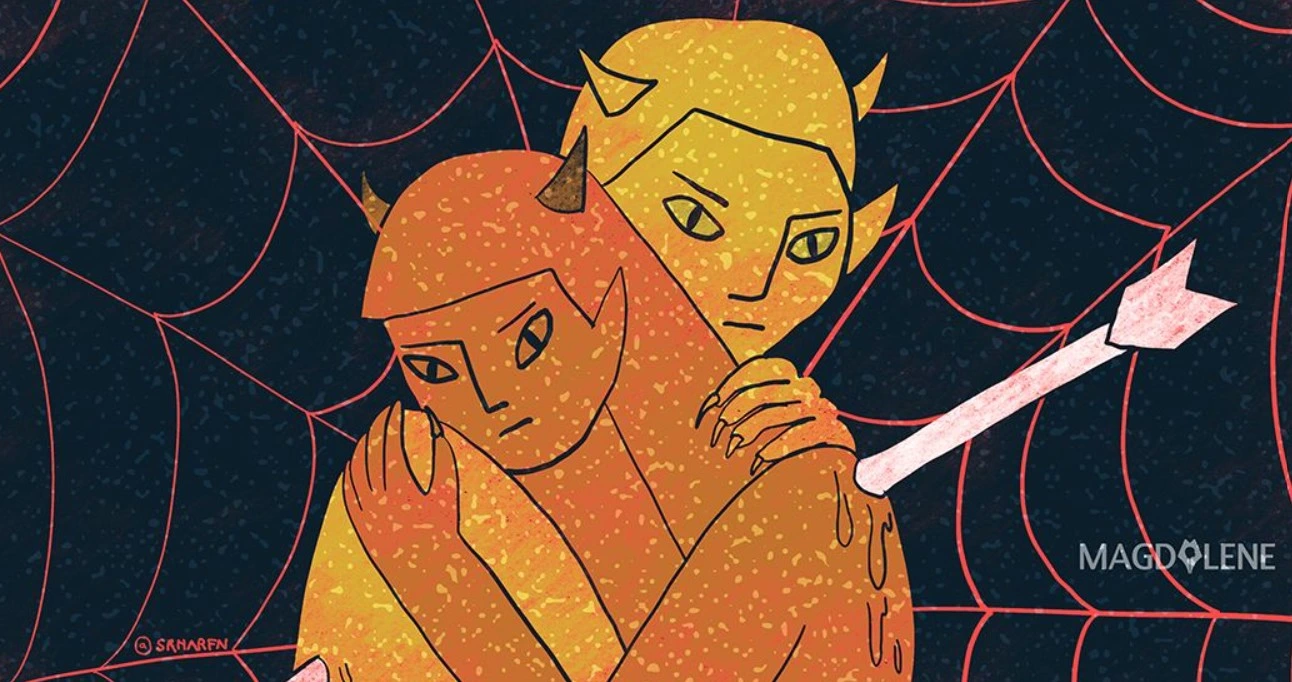Disney’s ‘The Little Mermaid’ Review: Ariel Finally Finds Her Feminist Voice

Warning: the following article contains spoilers.
I was brimming with nerves and excitement as I took my seat to watch Disney’s seventh live action princess film. As a Disney fan, their live action remakes help me revisit my childhood. But as a Disney scholar and a feminist, these adaptations often frustrate me.
In my research, I comment on how from 1989 to 1992, Disney’s animated princesses (Ariel, Belle, and Jasmine) can be characterised as “lost dreamers”. While they can be assertive, rebellious and brave, with hopes beyond romance (Ariel wants to explore the human world, Belle wants adventure and Jasmine wants to leave the palace), these traits disappear when a relationship is introduced.
Both the modern adaptations Beauty and the Beast (2017) and Aladdin (2019) fall short in their attempt to redress some of these issues. So I was worried for Ariel.
Ariel goes from wanting to be “part of that world”, to part of Prince Eric’s world. So much so that she sells her voice to gain access to it. From that moment on, she is powerless and must wait for Eric to save them all. How on earth were Disney going to approach this?
The casting of black actress Halle Bailey as Ariel received significant racist backlash. But has also been celebrated by the swatches of young girls who finally saw a Disney princess who looked like them. Modern representation matters among Disney princesses – there were no Disney princesses of colour until Aladdin’s Jasmine in 1992.
And Bailey is a star. Her voice, movements and facial expressions perfectly capture Ariel’s adventurous spirit. What I was most intrigued by however, were the changes in her character’s narrative and plot development.
Also read: Putri Duyung Disney Berkulit Hitam, Kenapa Tidak?
Lost Dreamer No More
In the 1989 animation, Ariel gives up her voice to Ursula the sea witch in exchange for legs. While Ariel is hesitant, Ursula reminds her that she will have no need for her voice above water. I was curious to see how the live action adaptation would navigate this complex plot line.
This time, Melissa McCarthy’s Ursula reveals she has added an extra kick – Ariel won’t remember that she needs true love’s kiss with Prince Eric (Jonah Hauer-King) by sundown. Rather than focusing on Eric, then, we get to see Ariel experiencing land for the first time.
Another welcome addition was Ariel’s internal monologue. This way, the audience knew what she was thinking and feeling, even though she could not verbally express it. It’s also used to critique some of the things women on land endure:
Squeeze in the shoes and the corset, it’s tight,
And the seams are busting,
Some women choose this, I guess it’s alright,
Are my dreams adjusting?
The acknowledgement of the tight corset is perhaps a reflection on the tiny waists of previous Disney princess films. Ariel’s internal monologue also provides the audience with her feelings on the sacrifices she has made:
What did I give to live where you are?
Where do I go with nowhere to turn to?
While Ariel is clearly interested in Eric, she bonds with him over their love of the world and exploring, which also provides Eric with further plot development than simply being “Prince Charming”. Eric is also given his own ballad, Wild Uncharted Waters, which provides more insight to his character.
Also read: Mulan Returns as Warrior as Disney Improves Cultural Approach
Changing the Narrative
Another key moment comes when Ursula (now parading as Vanessa) fools Eric into thinking that she saved him, not Ariel. As in the animated film, a miserable Ariel leaves the castle, accepting her fate. However, when Scuttle the seagull (an endearing Awkwafina) arrives to explain, she jumps into action.
In the 1989 animation, Ariel’s animal friends expose Vanessa – but not this time. I nervously hoped that Ariel would be given agency and I was not disappointed. It is Ariel who runs back to the engagement party, it is Ariel who grabs onto Vanessa’s necklace and it is Ariel who destroys it and reclaims her voice. This, is how Disney live action remakes should be, addressing the original problems of the film.
At the film’s climax, a furious Ursula claims Ariel as her own. As per the original animation, Eric arrives harpoons in tow to try and help, but to no avail. While we have seen Mulan at war and Rapunzel weaponising her handy frying pan, we have never seen a Disney princess commit the same acts of violence as Disney princes.
In this adaptation, however, it is Eric who is helpless and at the mercy of Ursula. Surely, I thought, Disney would not have Ariel commit the final blow? My heart raced as Ariel sent a ship coursing towards Ursula, fatally stabbing her. She saves Eric and all the kingdoms, land and sea. I was astounded. Never in all of Disney’s live actions or animations has a princess committed this type of violence.
In the end, instead of getting married, Ariel and Eric leave to explore uncharted waters together, demonstrating that a woman does not have to choose between her dreams and romance. In The Little Mermaid, audiences finally get to see Ariel in all her powerful, adventurous glory. She is not “part of that world” – it has become her world.
Robyn Muir, Lecturer in Media and Communications, University of Surrey.
This article was first published on The Conversation, a global media resource that provides cutting edge ideas and people who know what they are talking about.






















